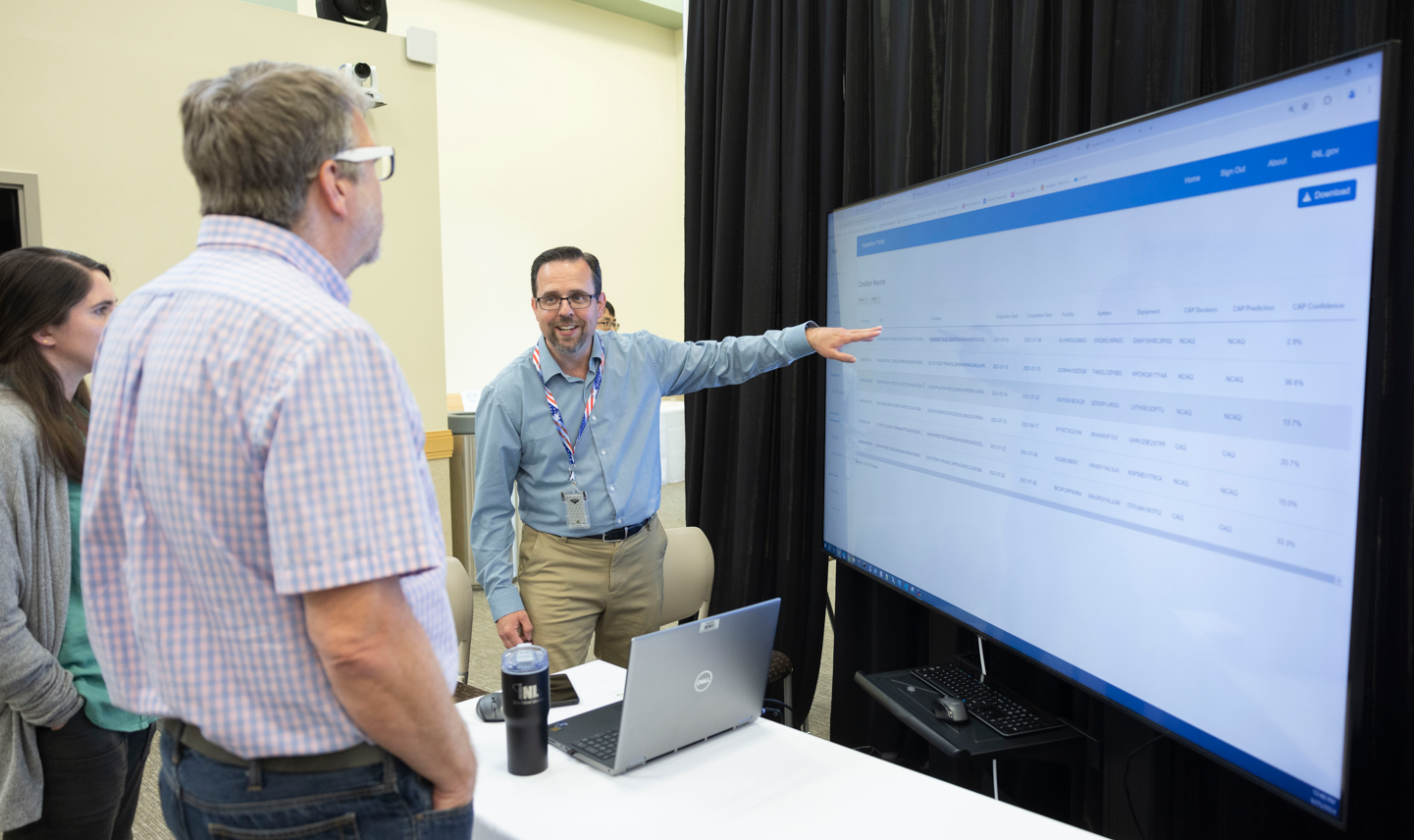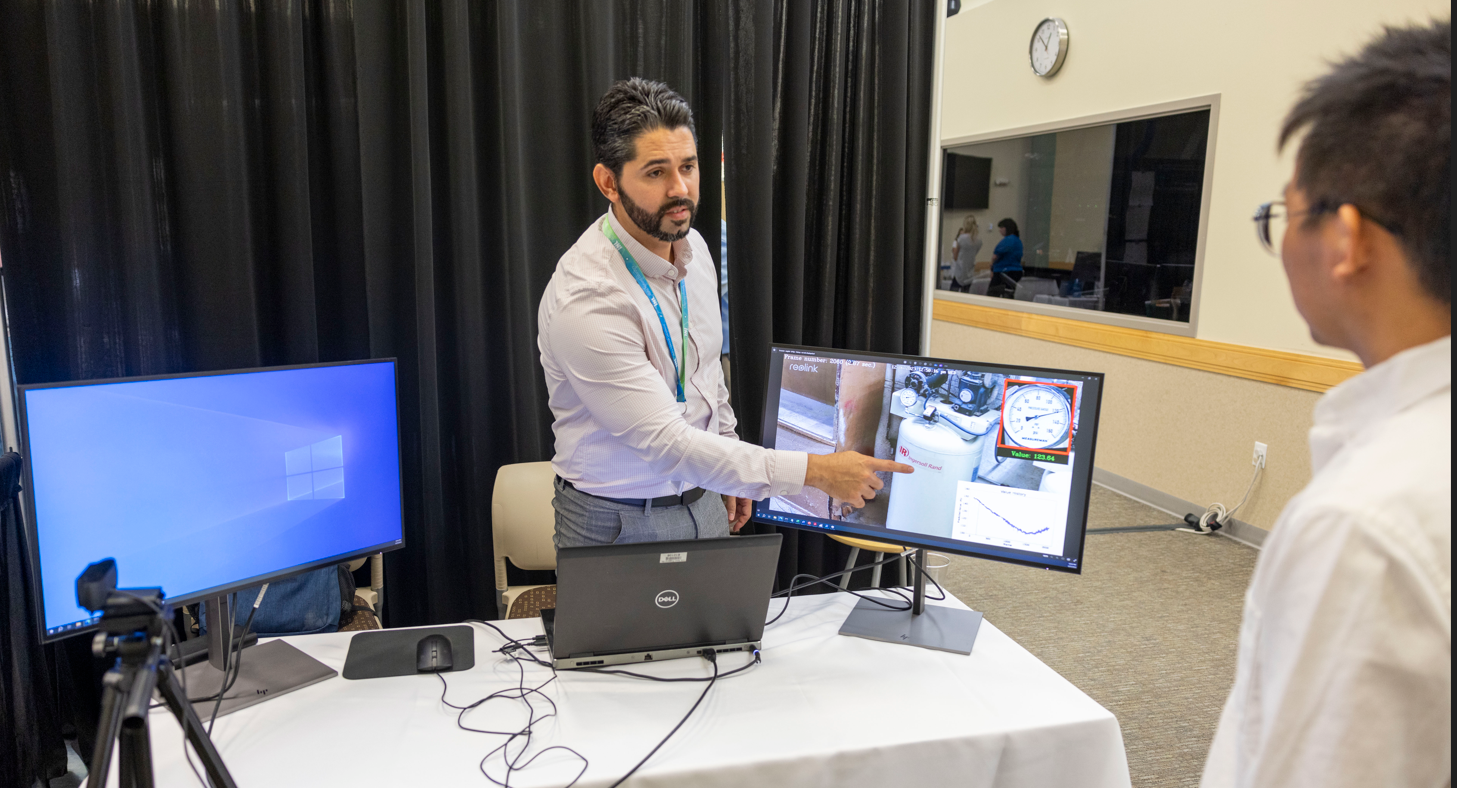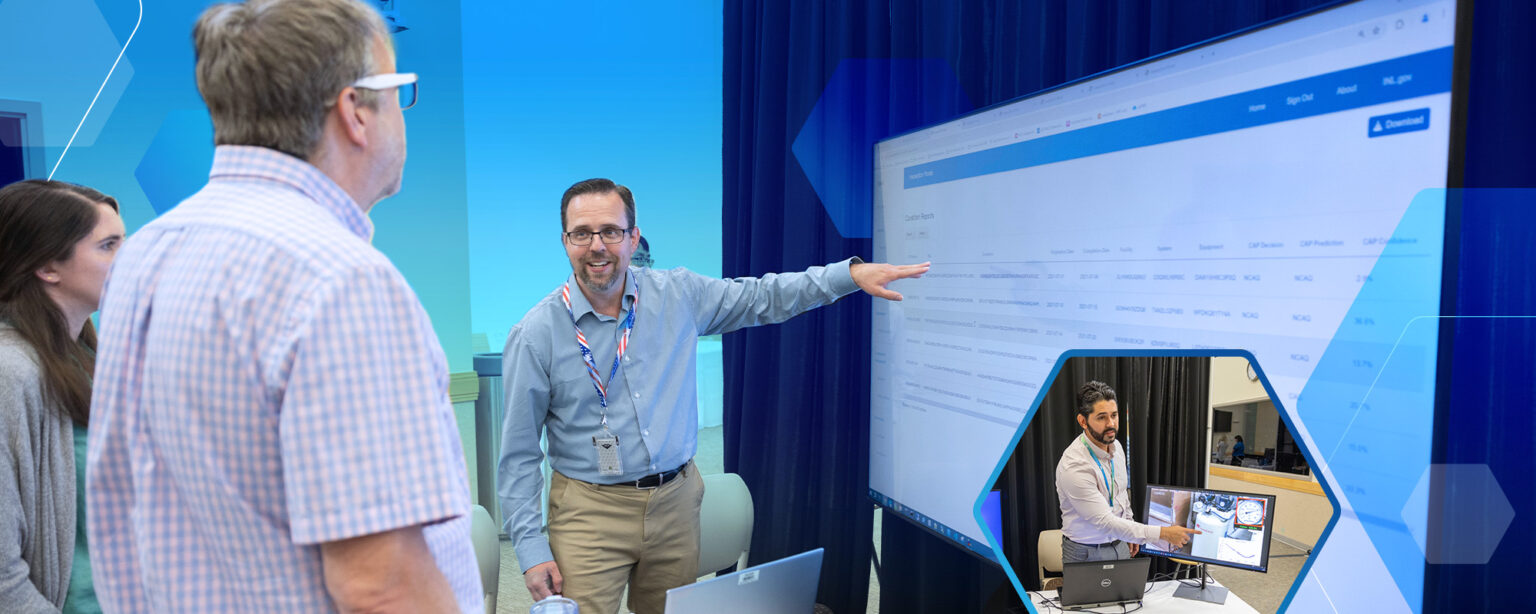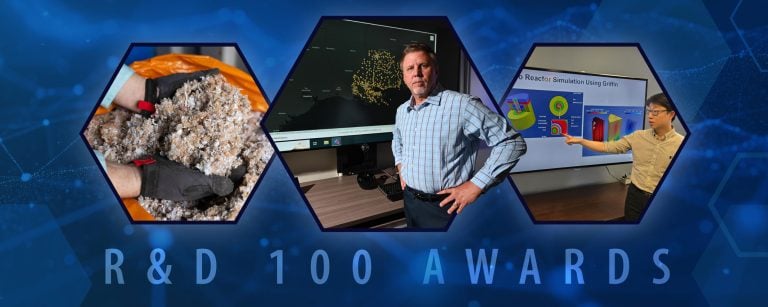Artificial intelligence (AI) and machine learning (ML) feature prominently in advancing technological development across many industries. Data is used to train algorithms, which are a set of digital rules, so tools can perform tasks that can imitate human behavior or enhance tasks generally performed by them: Think ChatGPT and how it can help plan a vacation or outline an essay.
“Generative AI tools are impressive in what they can do and are really fun to experiment with,” said Idaho National Laboratory (INL) human factors scientist Katya Le Blanc. “But what gets me excited about AI is the possibilities for using it to improve our science and business processes. You can use AI to automate tasks that are time consuming or boring, while the humans focus on the more fulfilling tasks that require more flexibility or creativity.”
This potential is the inspiration behind many AI projects at INL. Researchers are investigating how computational science can revolutionize efficiency and safety practices in the nuclear industry.
INL’s AI/ML contributions
A recent artificial intelligence and machine learning expo at INL showcased several AI and ML projects under development by INL researchers. “We’re developing technologies that can eventually be deployed by the nuclear industry and be used by nuclear utilities,” said Le Blanc, an event organizer.
One project focused on using machine learning for screening reports and data generated at a nuclear power plant. The project was created to automate nuclear power plant condition report analysis, but it has expanded to automate other work decisions in a plant. “At a nuclear plant, there is a lot of data generated, which eventually needs to be reviewed by someone,” said INL data scientist Brian Wilcken. “When people do a walkdown of a plant they could find a leaking valve somewhere, write down what they saw, then it flows through the official review process, which can take a lot of time and money.”

Wilcken demonstrated a data portal that is designed to simplify and automate some of that process. Wilcken showed how a spill, for example, would reflect to the program user. “The system has automatically read the text and communicated that this is something to be addressed urgently. Then the hundreds of thousands of reports that flow through the portal can be used to create trends in reported events within identified timeframes and topic areas.”
Still under the nuclear power plant AI/ML umbrella, another demonstration linked 1960s nuclear power plant infrastructure to modern technology. “Most of the instruments on their control panels or in the field are analog, so there’s a need to convert that data into a digital form so that we can use that data to monitor the plant condition or, even on our own nuclear reactor simulators, train new operators,” said machine learning Ph.D. student and INL intern Roger Boza.
The demonstration included an analog gauge, a camera and the AI technology, which could accurately read the gauge at various angles up to 45 degrees. Depending on the camera resolution and zooming capability, the program is also capable of reading the gauge at distances of approximately 18 feet and can read up to 20 gauges at a time.

Another project called Image Anomaly Detection can monitor the area within a camera frame, determining whether items have been added, removed or adjusted. To demonstrate this, computing and data science Ph.D. student and INL intern Tianjie Zhang focused a camera on a video of someone adjusting a valve. “The system can manage a variety of changes in a video stream in real time. It can notify you immediately that someone forgot to turn a valve off, for example, and you need to get someone to fix it,” Zhang said.
Other AI/ML systems presented at the expo include tools designed for electric vehicle review analysis, image resolution enhancement, fire detection and more.
INL capabilities and collaborations
The Department of Energy Office of Nuclear Energy’s (DOE-NE) Light Water Reactor Sustainability Program, Nuclear Energy Enabling Technologies Advanced Sensors and Instrumentation Program, and several other DOE-NE programs have AI experts and a large pool of data scientists who are working to customize solutions to meet the demand of the nuclear power industry. Using the supercomputers at INL’s Collaborative Computing Center, staff members have started using generative AI methods to automate what used to be difficult and labor-intensive tasks. Some of these codes are available for industry licensing and are already being used by utilities.

“We started this event in 2023 and had a lot of success,” said expo planning committee member and INL senior research and development scientist Ahmad Al Rashdan. “It has provided a lot of exposure for INL staff and allowed them to show off what they’ve been doing. Having a hands-on event makes it much more fun and practical to connect with the public and find new applications for our technologies beyond their original design.”
The organizing committee is already looking forward to next year’s event with hopes of garnering more attendance from the public.
“Though we initially intended for this event to connect researchers and industry, we realized this would be a great opportunity to showcase to the public and educational groups how our scientists are using this cool technology to solve real-world problems,” said Le Blanc. “We’re really hoping to capture those audiences more as we do these expos in the future.”







